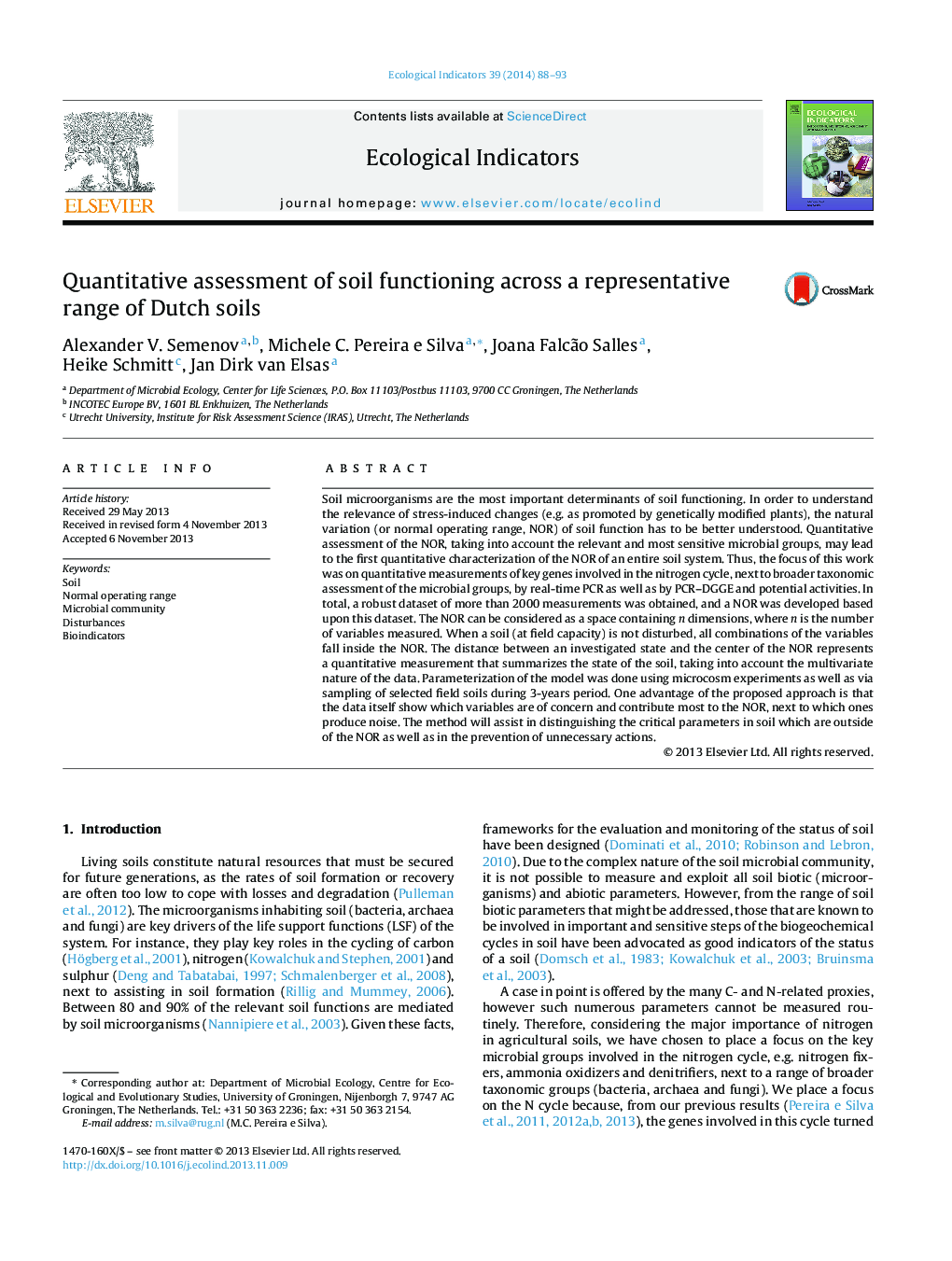| Article ID | Journal | Published Year | Pages | File Type |
|---|---|---|---|---|
| 6295406 | Ecological Indicators | 2014 | 6 Pages |
Abstract
Soil microorganisms are the most important determinants of soil functioning. In order to understand the relevance of stress-induced changes (e.g. as promoted by genetically modified plants), the natural variation (or normal operating range, NOR) of soil function has to be better understood. Quantitative assessment of the NOR, taking into account the relevant and most sensitive microbial groups, may lead to the first quantitative characterization of the NOR of an entire soil system. Thus, the focus of this work was on quantitative measurements of key genes involved in the nitrogen cycle, next to broader taxonomic assessment of the microbial groups, by real-time PCR as well as by PCR-DGGE and potential activities. In total, a robust dataset of more than 2000 measurements was obtained, and a NOR was developed based upon this dataset. The NOR can be considered as a space containing n dimensions, where n is the number of variables measured. When a soil (at field capacity) is not disturbed, all combinations of the variables fall inside the NOR. The distance between an investigated state and the center of the NOR represents a quantitative measurement that summarizes the state of the soil, taking into account the multivariate nature of the data. Parameterization of the model was done using microcosm experiments as well as via sampling of selected field soils during 3-years period. One advantage of the proposed approach is that the data itself show which variables are of concern and contribute most to the NOR, next to which ones produce noise. The method will assist in distinguishing the critical parameters in soil which are outside of the NOR as well as in the prevention of unnecessary actions.
Related Topics
Life Sciences
Agricultural and Biological Sciences
Ecology, Evolution, Behavior and Systematics
Authors
Alexander V. Semenov, Michele C. Pereira e Silva, Joana Falcão Salles, Heike Schmitt, Jan Dirk van Elsas,
